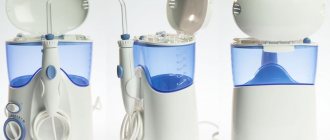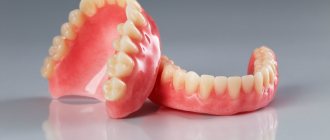“What do you think is the leading facial rejuvenation surgery according to statistics among American plastic surgeons? No, not the fight against wrinkles or even a facelift.
The American Society of Plastic Surgery names bags and swelling on the cheekbones under the eyes as the most common reason for visiting a rejuvenation specialist.
I confirm that this is indeed the case. Many of us are ready to put up with the first wrinkles and small bags under the eyes. But the cheek bags are too noticeable, and creams are powerless against them. Therefore, it is this problem that sooner or later leads to a specialist.”
Andrey Iskornev, plastic surgeon.
Swelling on the cheekbones: causes and consequences
Year after year goes by. The first signs of age appear as bags and puffiness under the eyes. After a few more years, a second fold begins to appear in the area of the cheek bones. These are “painting bags” (their second name is “sufa”).
Like bags under the eyes, they have similar unpleasant properties.
Firstly, fatty hernias on the cheekbones greatly spoil the appearance and make the face sad.
Secondly, these formations consist entirely of adipose tissue, so they tend to retain water, increase in size and form malar edema.
We often hear that the cause of swelling on the cheekbones is insufficient self-care. They say, take time for yourself, and miraculous creams, massages and vitamin complexes will remove all the bags under the eyes on the cheekbones in a month, and you will again shine with youth and beauty.
To be fair, it is worth saying that cheekbones are not a disease. This is an anatomical feature of the body: paint bags filled with adipose tissue. However, in youth, the good tone of young skin hides the problem.
With age, the skin becomes drier and thinner, the facial muscles lose their elasticity, the fatty tissue begins to sink down, sag, and... Everything secret becomes clear.
Swelling of the eyelid
The eyelids are folds of skin around the eyes, consisting of many organs, each of which plays an important role. The muscles help a person blink, the conjunctiva helps to moisturize the eyeball, and the meibomian glands retain moisture. Together they form a complex system, the main purpose of which is to protect the eyes from drying out, dirt, bright light and other negative environmental factors. Inflammation of one of the organs leads to the development of diseases, the main symptom of which is swelling of the eyelid.
Symptoms
Characteristic signs of developing pathology include:
- swelling of the area around the eyes;
- increased temperature (symptoms of barley, conjunctivitis, furunculosis);
- pallor of the skin – with a non-inflammatory nature of the disease;
- characteristic enlargement of lymph nodes - during the inflammatory process.
What complications can arise from eyelid swelling?
- When excessive internal pressure occurs, glaucoma occurs.
- Decreased visual acuity, complete blindness.
- Operable and inoperable cancer.
Description of the disease
Edema of the eyelid is a pathological accumulation of fluid in the area of loose connective tissue. The process results in visible swelling around the eyes.
Swelling in this area forms quite easily. This is due to the fact that the subcutaneous layer of fiber and muscles are poorly developed, and there are many blood vessels. Swelling of the area around the eyes is a common phenomenon that causes a lot of inconvenience. In addition, this is an alarming sign indicating a malfunction that has occurred in the body. Many people first of all think about the aesthetic component. But if a cosmetologist can get rid of the external manifestations of the disease, he will not solve internal problems.
Swelling is a symptom of many diseases, as well as a sign of an unhealthy lifestyle. Thus, swelling can occur due to a violation of the drinking regime or diet, alcohol abuse, or addiction to salty foods. Such swelling is physiological in nature, disappears within 24 hours and does not require medical intervention.
If the swelling is systematic and does not go away on its own, it cannot be considered as a cosmetic problem - you need to contact an ophthalmologist.
Classification of eyelid edema
Depending on the history, there are several types of edema of the paraorbital region:
- Inflammatory. The cause is bacterial damage. As a result of the negative impact, suppuration begins. Pus accumulates in the paraorbital area, the eyelids swell. Externally, the pathology is expressed in the form of hyperemia of the eyelids, a noticeable thickening at the site of the disease.
- Non-inflammatory. Unlike the inflammatory variety, this process rarely manifests itself visually. The main symptoms are pale skin and swelling in the morning. It usually appears on the lower eyelids and indicates a malfunction of some internal organs - liver, kidneys, thyroid gland. It can also occur due to incorrect head position during sleep.
- Allergic. In case of contact with an irritant, it begins to develop rapidly. After eating a food that causes an allergy, swelling appears after a couple of hours. The most aggressive form of the reaction is Quincke's edema, in which not only the eyelids, but also the tissues of the head, neck, and larynx swell. This leads to difficulty breathing and therefore requires immediate medical attention.
- Traumatic. In this case, it is not necessary to injure the area around the eyes: the eyelid swells when the soft tissues and muscles of the face are damaged. This could be a bruise, surgery, consequences of plastic surgery, microtrauma caused by wearing contact lenses.
- Reactive. The cause of its appearance is an inflammatory process near the paranasal sinuses.
Causes of edema
The main causes of paraorbital swelling, which causes discomfort and spoils external aesthetics, can be divided into two categories - pathological and non-pathological.
Non-pathological causes include:
- Fatigue caused by increased eye strain, prolonged sitting at the computer, and lack of sleep.
- Diet violation. For example, the abuse of pickles, which retain water in the body.
- Drinking large amounts of liquid.
- Alcohol abuse. Alcohol displaces fluid from the body, which leads to a constant feeling of thirst. An unpleasant “bonus” is swelling of the paraorbital area.
- Incorrect head position during sleep. If you sleep on a low pillow or without one at all, you can provoke an abundant flow of blood to the head, which causes bilateral swelling. When sleeping on one side, fluid accumulates, resulting in unilateral swelling.
- Poor quality cosmetics, lack of habit of removing makeup.
- Eyelash extensions, tattooing, anti-aging procedures.
- Injuries. A bruise on the bridge of the nose provokes bilateral swelling. Trauma to the eye area is the cause of unilateral swelling. Various maxillofacial and plastic surgeries also lead to similar consequences.
- Predisposition. People with thin skin often experience swelling around the eyes in the morning after drinking an extra glass of water in the evening. Edema can also appear due to excessive physical exertion.
- Age. Over time, the tissue and muscles of the eyelids weaken, fat sag, and large amounts of fluid accumulate, causing “bags” to form.
If we talk about pathological edema of the paraorbital region, they can be provoked by both eye and general diseases:
- Barley. Characterized by pain, hardness, and swelling. The swelling gradually increases, the skin turns red, but the site of inflammation is localized. After opening the abscess, the swelling subsides.
- Conjunctivitis. The causes of pathology are often streptococci and staphylococci. In severe cases of the disease, swelling of the eyelids gradually begins to develop.
- Blepharoconjunctivitis. Symptoms: inflammation of the mucous membrane of the eye and eyelids.
- Trachoma. Pathology caused by chlamydia.
- Chalazion. A disease involving the edges of the eyelid, meibomian gland, cartilage. In some cases it is chronic.
- Blepharitis. Inflammation of the edge of the eyelids, accompanied by hyperemia, peeling, swelling, itching, and loss of eyelashes. The cause of the pathology is an allergic reaction to external irritants.
- Ophthalmoherpes. Symptoms: swelling around the eye, pain, itching, redness of the conjunctiva.
- Benign and malignant neoplasms in the eye area.
- Tuberculosis of the eye.
- Graves' disease. Caused by an increased amount of hormones produced by the thyroid gland. It manifests itself as protrusion of the eyeball, swelling of the periorbital region.
- Demodecosis. Damage by the parasite, accompanied by loss of eyelashes, discharge of pus, redness, itching, swelling.
- Fatty hernia, sinusitis. Often provoke swelling of the lower eyelid.
- Diseases from the ENT system.
- Kidney diseases. Characterized by bilateral, pale, soft-to-touch swelling.
- Pathologies of the cardiovascular system.
- Changes in hormonal levels. Sometimes small swellings are observed on certain days of the menstrual cycle. Swelling can also occur during pregnancy.
Not all pathologies indicated in the list have a real threat to human health and life.
Doctors are especially monitoring people with diseases of the cardiovascular system, kidneys, and endocrine glands.
Prevention
To prevent swelling of the paraorbital area, experts recommend adhering to certain rules:
- Do not drink large amounts of liquid. In the evening, you should refrain from salty foods, as they provoke a feeling of thirst. Before going to bed, just drink a glass of herbal infusion and warm milk. This will quench your thirst and help avoid morning puffiness. Fans of soda, strong tea, and coffee should limit the amount of these drinks.
- Maintain personal hygiene. The eyelids need to be cleaned daily - morning and evening before going to bed. This is especially true for women who use decorative cosmetics. It is also important that each household member has a personal towel that needs to be changed regularly.
- Using quality products. Facial care products and cosmetics should be purchased from trusted manufacturers - this will help avoid purchasing low-quality or counterfeit products. You should also consult with a specialist before the tattoo procedure.
- Compliance with safety regulations. Some professions involve processes and tools that can damage the mucous membranes and skin around the eyes. To avoid this and maintain your health, you must wear special glasses while working.
- Eye protection in the summer. Direct ultraviolet rays have a negative effect on the eyes in particular and the body in general. To protect the delicate mucous membrane of the sun, you need to wear glasses, use an umbrella or a hat with a wide brim.
- Maintaining distance when communicating with people. If the interlocutor is coughing, sneezing, or has visual signs of eye diseases, such as stye, it is better to postpone communication until he recovers.
- Regular cleaning of premises. Doctors note that the number of patients with allergies to dust, mold and other household contaminants is growing every year. This is why it is so important to carry out thorough and regular cleaning of premises. It is also worth going through old things and getting rid of those that are no longer useful, because they are an excellent accumulator of dust in a living environment.
- Pet care. Animal fur is a powerful allergen to which a large number of people are sensitive. To prevent your furry pet from becoming the cause of illness, you must regularly vacuum carpets, rugs, treat upholstered furniture and textiles, and comb your pets thoroughly, especially during seasonal molting.
If paraorbital edema has already appeared or often “pleases” you in the morning, you need to contact a specialist who will help you find out the cause, adjust your daily routine, diet and drinking regimen.
How to treat eyelid swelling
- If the cause of swelling is a bruise, the eyelid usually immediately begins to increase in volume. In this case, it is necessary to wash your hands with unscented soap, since scented options can cause an allergic reaction. Then treat the injury site with an antiseptic and apply a cold compress - it will help stop the growth of swelling. Then cover the affected area with a sterile cloth and go to the emergency room.
- Cold compresses or ice cubes. Moreover, these can be cubes from herbal decoctions, such as calendula, mint or parsley. If necessary, the pieces are removed from the mold, wrapped in gauze, and carefully wiped over the eyelids.
- Tea lotions. It is especially convenient to use tea in bags, which must first be brewed and cooled to room temperature.
- Eye drops. In this case, it is important to consider the cause of the tumor. So, Oftalmoferon will help in case of eye damage from viruses. Tetracycline is indispensable when swelling is caused by bacteria.
- Decongestants. They are usually prescribed in case of blockage of the sebaceous gland. In a hospital setting, Tavegil will help cope with extensive swelling.
- Analgesics. The inflammatory process is often accompanied by painful sensations. To alleviate the condition, you need to take Analgin.
- Ointments. Hydrocortisone ointment has a pronounced antibacterial effect and helps eliminate swelling.
- Absorbents. You can use activated carbon, which will remove the substance that causes the swelling from the body.
- Antihistamines. You should take allergy medications only after seeing a doctor. Suprastin, Claritin, Zodak, Diazolin and others are usually prescribed.
- Use of liquid nitrogen. In the absence of metastases, the substance can help destroy the focus of a malignant neoplasm.
- Operation. Surgery will allow you to remove the cancer with excision of a small area of tissue surrounding the tumor. If further tests are within normal limits, the patient undergoes plastic surgery to correct the defect.
- Application of drops. Drugs from the vasoconstrictor group are used. Vizin and Octilia have proven themselves especially well.
In the case of malignant neoplasms in the later stages, the prognosis does not look very optimistic. If a small area is affected, all tissue from the area is removed during surgery. If manipulation is not practical, the patient is prescribed radiation and chemotherapy.
Lifestyle
You can help avoid swelling by following simple recommendations:
- Do not come into contact with substances that cause an allergic reaction.
- If itching occurs, it is important not to scratch it.
- Regularly visit doctors of various specialties.
- Rejection of bad habits.
- Controlling the amount of liquid you drink.
When contacting our center, the patient can be sure that he will receive the most modern, effective treatment, selected taking into account the individual characteristics of the patient’s body.
Timely consultation with a doctor, competent therapy, a healthy lifestyle, and following the doctor’s instructions are the key to a positive result with minimal financial costs.
Author
Danilova Elena Fedorovna
ophthalmologist
17 years of experience
+7
How to get rid of bags under the cheekbones: debunking myths
The first thing that comes to mind: massages, medicinal cosmetics, vitamins... This is a good option. It will be great if you add fresh air, proper nutrition and exercise! You will look much better and feel incredibly healthier.
There is only one BUT: these wonderful measures will in no way help you remove the swelling on your cheekbones under your eyes.
Let us remind you: we are dealing with zygomatic hernias, with some mini-containers of adipose tissue that fall down under the influence of the universal law of attraction. Judge for yourself, how can you solve this problem with the most wonderful massage and the longest walks? That's it, no way.
Diagnostics
To diagnose flux, methods such as questioning, examination, and additional research methods are used: radiography, ultrasound, computed tomography, magnetic resonance imaging, blood test data, culture of exudate, etc. An experienced maxillofacial surgeon who treats patients with flux, can, based on the patient’s complaints and examination, carry out an accurate topical diagnosis of the disease (localization of pus) and select the optimal surgical approach to ensure sanitation of the purulent focus and adequate drainage.
Method 1. You can remove sufas from your face without surgery
“The method used to remove paint bags on the face primarily depends on the severity of the problem.
If malar edema has just appeared and is not yet very noticeable, do not delay going to the doctor. Right now you can get rid of trouble easily and simply
.
At this stage, non-surgical injection blepharoplasty Dermaheal Eyebag Solution will help remove bags under the eyes.
The procedure was originally developed for bags under the eyes, but it is also great for cheekbones.
The drug is a mixture of biomimetric peptides for various purposes. Some peptides significantly reduce the volume of fat in hernias without destroying fat cells. The latter stimulate collagen and elastin and strengthen the skin, reducing the protrusion of the bag. Still others remove excess fluid and restore the tone of the facial muscles. The fourth improve the quality of the skin, smooth out fine wrinkles.
It is important to note that the drug does not contain any direct lipolytics, which makes its use safe.
To resolve the bags, two procedures are usually prescribed, but many are quite satisfied with the result of the first.”
Maxim Vasiliev, plastic surgeon.
It is very important that the Dermaheal Eyebag Solution procedure, although it is not plastic surgery, is nevertheless performed by a plastic surgeon. Why a surgeon if there is no scalpel? So that the scalpel is not needed in the future.
It is important to prevent the drug from getting into other areas of the face. The injection area is small, so you need to have a perfect understanding of the anatomical features of the middle zone. Practicing plastic surgeons have this necessary knowledge.
Treatment
Treatment for flux can be boiled down to a catchphrase in Latin: “Ubi pus, ibi incision,” which translates as “Where there is pus, there is an incision.” Treatment of flux begins with eliminating the cause that caused the flux. That is, from the removal of the causative tooth. Next, they begin to drain (empty) the purulent focus by opening (incision) in the area of the flux. The abscess is emptied, the abscess cavity is washed with antiseptic solutions, and drainage is installed through which pus will be released. Regardless of the type of flux, the principle of treatment remains the same: opening the lesion, drainage.
In the postoperative period, daily antiseptic treatment (washing) with antiseptic solutions is carried out. There is a peculiarity in the treatment of these diseases (flux, periostitis, phlegmon, etc.), which is that immediately after surgery and up to 1-2 days, facial swelling (flux) may increase. This should not be taken as a worsening of the disease. The fact is that any surgical intervention is perceived by the body as an injury, and the body responds to this by increasing tissue swelling in the area of injury. This may be accompanied by increased swelling of the eyelids, cheeks, etc. Painful sensations decrease and subsequently decline as acute inflammatory phenomena subside. As a rule, antibacterial drugs, antihistamines and painkillers are prescribed after surgery.
If there is an advanced case of flux, which is accompanied by a violation of the function of external respiration (the patient may suffocate), then hormonal drugs are prescribed, and even an operation is performed - a tracheotomy. The operation consists of making an incision in the area of the tracheal rings and installing a tube. As the swelling of the upper respiratory tract (pharynx, larynx) decreases, when the threat of asphyxia (suffocation) has passed, the tube is removed from the trachea, and the patient breathes through the natural airways. The duration of prescription of drugs is determined by the attending physician. The drainage in the wound is periodically changed, and the wound is removed when cleansed. The duration of drainage in the wound is also determined by the attending physician, based on the clinical picture of the disease. The drainage can remain in the wound for an average of 3 to 10 days.
If the incision for flux was made through the oral mucosa, then additional suturing of the wound is not required in the future. The wound in the oral cavity will heal on its own (by secondary intention). If the incisions were on the skin side, then after the acute inflammatory processes have subsided, the wound can be sutured. After suturing the wound (and this can be 2-4 weeks after surgery), the patient is also prescribed antibacterial drugs and painkillers, and the wound is drained.
With inadequate treatment, as well as in advanced cases of flux, complications such as suffocation, penetration of infection into the cranial cavity, onto the membranes of the brain, into the neck and into the mediastinum (part of the chest cavity where vital organs are located), penetration into the orbital cavity with damage to the optic nerve and the occurrence of a systemic inflammatory reaction (sepsis), which leads to multiple organ failure and even death.
Soft tissue incisions, which are used in the surgical treatment of flux, must ensure complete sanitation of the purulent focus and adequate drainage. Surgical treatment should not be replaced by the prescription of strong antibacterial drugs. Waiting tactics, delays in performing surgery, and small incisions that do not provide adequate drainage of the purulent focus are unacceptable. We must not forget that surgery for a purulent process in the maxillofacial area and neck is often an operation to save the patient’s life. The occurrence of complications is more likely when the patient has concomitant chronic diseases: diabetes mellitus, coronary heart disease, anemia, diabetes mellitus and others. Elderly and senile age are also factors that can aggravate the course of this disease.










